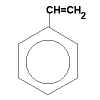Please do not block ads on this website.
No ads = no money for us = no free stuff for you!
Reactions of Ethene (ethylene)
Ethene (ethylene) undergoes complete combustion in excess oxygen to produce carbon dioxide and water.
Ethene (ethylene) undergoes addition reactions with:
The chemical reactions of ethene (ethylene) are summarised in the table below:
Production of Ethene (ethylene)
Ethene can be produced either by:
- Extraction from natural gas using fractional distillation followed by steam cracking (the technique for converting alkanes to alkenes)(750 - 900°C) followed by liquefaction of the gas (-100°C) and then further fractional distillation
OR
- Extraction from crude oil using fractional distillation followed by steam cracking (750 - 900°C) of the naphtha or gas-oil fractions followed by liquefaction of the gas (-100°C) and then further fractional distillation.
The cracking process typically involves endothermic equilibrium reactions such as:
- C2H6(g) ⇋ C2H4(g) + H2(g) ΔH = +138 kJ mol-1
- C3H8(g) ⇋ C2H4(g) + CH4(g) ΔH = +81 kJ mol-1
To maximize the rate of the cracking reactions:
- the temperature can be increased so that the gas particles move more quickly and collide more often
- increase the pressure which forces the gas particles closer together and collide more often
- no catalyst is needed to increase the rate of this reaction since the steam provides the required activation energy
To maximize the yield of ethene, by Le Chetalier's Principle:
- increasing the temperature of the reactions favours the formation of products since the reactions are endothermic.
So increasing the temperature speeds up the rate of the reaction and increases the yield of ethene.
- a decrease in pressure would favour the the formation of products since there are more gaseous product molecules than there are gaseous reactant molecules.
However, a decrease in pressure would slow down the rate of the reaction. For this reason the pressure is kept at or below atmospheric pressure.
- removing the product will favour the formation of more product thereby increasing the yield of product.
Equilibrium is therefore never actually achieved (this is not a closed system).

